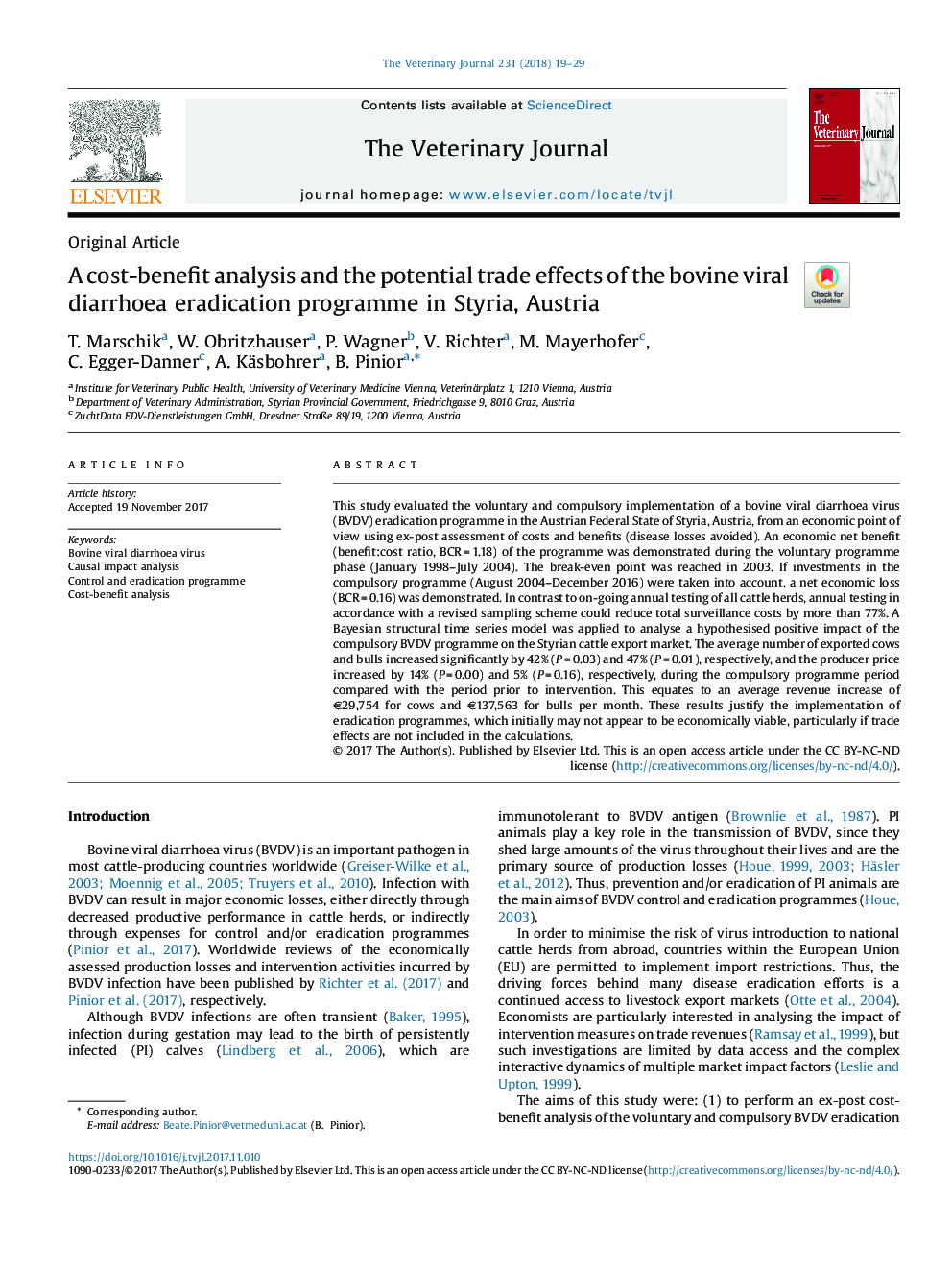| Article ID | Journal | Published Year | Pages | File Type |
|---|---|---|---|---|
| 8504985 | The Veterinary Journal | 2018 | 11 Pages |
Abstract
This study evaluated the voluntary and compulsory implementation of a bovine viral diarrhoea virus (BVDV) eradication programme in the Austrian Federal State of Styria, Austria, from an economic point of view using ex-post assessment of costs and benefits (disease losses avoided). An economic net benefit (benefit:cost ratio, BCR = 1.18) of the programme was demonstrated during the voluntary programme phase (January 1998-July 2004). The break-even point was reached in 2003. If investments in the compulsory programme (August 2004-December 2016) were taken into account, a net economic loss (BCR = 0.16) was demonstrated. In contrast to on-going annual testing of all cattle herds, annual testing in accordance with a revised sampling scheme could reduce total surveillance costs by more than 77%. A Bayesian structural time series model was applied to analyse a hypothesised positive impact of the compulsory BVDV programme on the Styrian cattle export market. The average number of exported cows and bulls increased significantly by 42% (P = 0.03) and 47% (P = 0.01), respectively, and the producer price increased by 14% (P = 0.00) and 5% (P = 0.16), respectively, during the compulsory programme period compared with the period prior to intervention. This equates to an average revenue increase of â¬29,754 for cows and â¬137,563 for bulls per month. These results justify the implementation of eradication programmes, which initially may not appear to be economically viable, particularly if trade effects are not included in the calculations.
Related Topics
Life Sciences
Agricultural and Biological Sciences
Animal Science and Zoology
Authors
T. Marschik, W. Obritzhauser, P. Wagner, V. Richter, M. Mayerhofer, C. Egger-Danner, A. Käsbohrer, B. Pinior,
